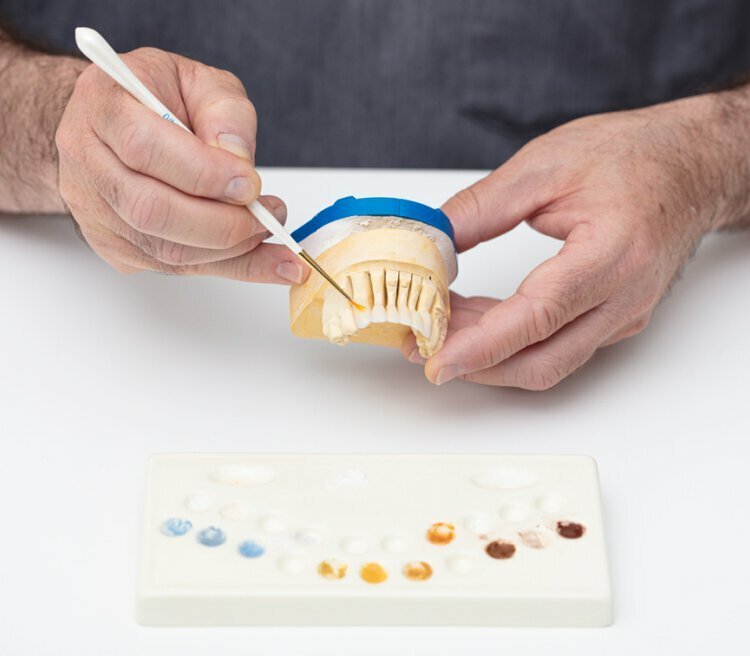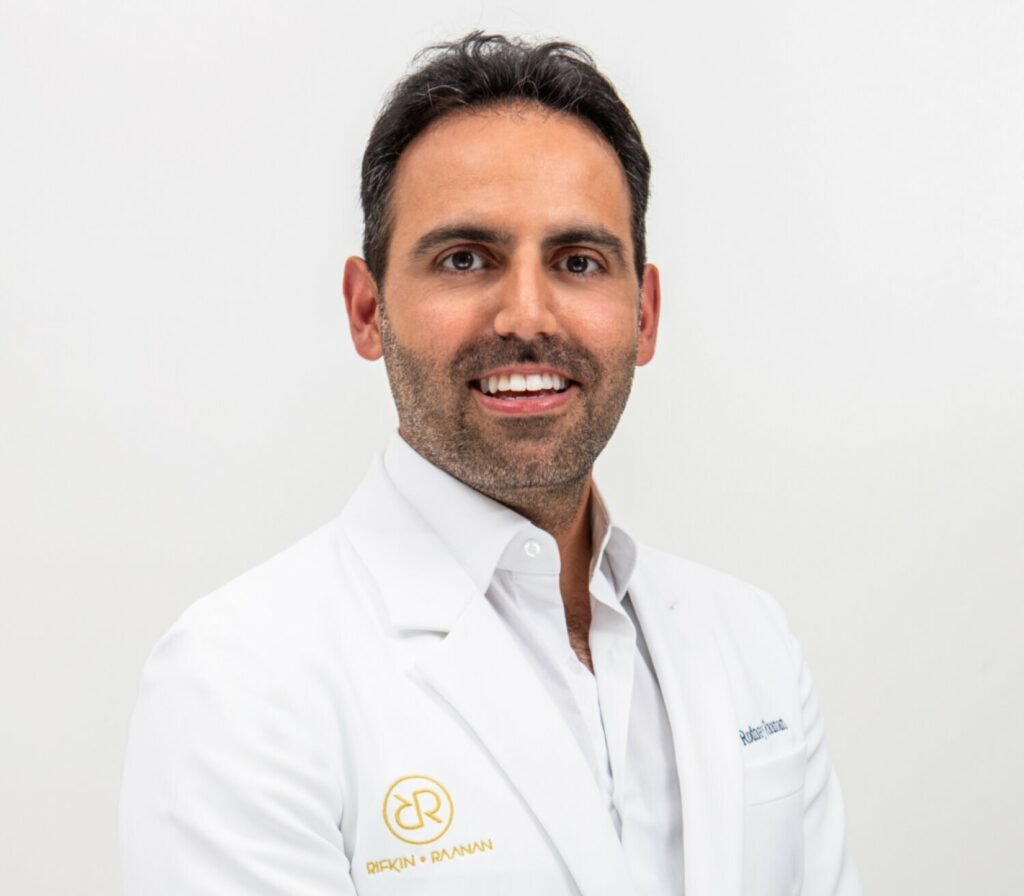The dazzling smiles seen on today’s red carpets and silver screens have a fascinating origin story, one deeply intertwined with the evolution of Hollywood itself. Porcelain veneers, now a common cosmetic Dental procedure, began as a temporary solution for movie stars and have since transformed into a lasting symbol of aesthetic perfection. This blog post delves into the history of porcelain veneers, tracing their journey from early Hollywood to modern cosmetic dentistry.
The Dawn of the Hollywood Smile
The concept of Dental veneers emerged in 1928, pioneered by Californian cosmetic dentist Charles L. Pincus, often dubbed the “Dentist to the Stars.” Operating out of Beverly Hills, Pincus revolutionized the way stars presented themselves. With the advent of “talking pictures,” the close-up scrutiny of actors’ appearances intensified, revealing Dental imperfections previously overlooked. Pincus’s initial invention was a temporary prosthetic, a thin acrylic shell. These early veneers were fragile, designed for filming, and removed daily.
For decades, veneers remained largely a Hollywood secret, used exclusively to give stars a camera-ready smile. The limited technology of the past profoundly shaped the early development of this cosmetic solution. This early period is crucial in understanding the complete history of porcelain veneers.
From Temporary Fix to Lasting Perfection
The true breakthrough in veneer technology arrived in the latter half of the 20th century. In 1959, Dr. Michael Buonocore introduced the etching technique, which significantly improved adhesion. Further advancements in the 1980s by Drs. R.J. Simonsen and J.R. Calamia revolutionized the process with composite resins for stronger, more durable bonding. This marked the shift from temporary Hollywood props to a viable, long-term cosmetic solution for the general public. Modern veneers, known for their natural translucency, durability, and stain resistance, can now last for a decade or more with proper care. The continuing history of porcelain veneers is marked by these significant technological leaps in Dental science.
The Evolution of Veneers: A Comparison
| Feature | Early Veneers (1920s-1970s) | Modern Veneers (1980s-Present) |
|---|---|---|
| Material | Acrylic, early porcelain | High-grade Dental porcelain, ceramic |
| Adhesion | Temporary (denture powder) | Strong, permanent bonding (etching, composite resin) |
| Durability | Fragile, short-term wear | Highly durable, can last 10+ years |
| Application | Applied just for filming, removed daily | Permanently bonded to teeth |
| Purpose | Cosmetic illusion for filming | Long-term aesthetic and functional improvement |
Export to Sheets
The Red Carpet Standard: Why Hollywood Embraced Veneers
In Hollywood, where appearance is paramount, a flawless smile is often considered a non-negotiable asset. Celebrities face constant scrutiny, and porcelain veneers offer a quick and effective way to achieve a bright, even, and perfectly aligned smile. They can correct a multitude of imperfections, providing an “instant transformation” that other Dental procedures might take much longer.
The widespread adoption of veneers by celebrities has profoundly influenced public perception. The “Hollywood smile,” meticulously crafted by top dentistry professionals in places like Beverly Hills, has become a global aesthetic standard, driving demand for similar cosmetic treatments worldwide. This visibility underscores the significant impact of celebrity culture on personal beauty choices and the ongoing quest for the perfect smile. This modern chapter solidifies the fascinating history of porcelain veneers.
The Modern Veneer Experience: Comfort and Precision in Cosmetic Dentistry
Today’s cosmetic dentistry practices prioritize patient comfort, making the process of receiving veneers a much more relaxed experience than ever before. Advanced techniques allow for precise placement, ensuring a beautiful and natural-looking result. For patients who experience anxiety during Dental procedures, various forms of sedation are available. From mild sedation to deeper oral sedation or even IV sedation, a qualified dentist can ensure a calm and comfortable visit. This focus on patient comfort is a hallmark of modern dentistry, making the journey to a new smile accessible to everyone, even those with previous Dental fears. A skilled dentist understands the importance of a pain-free experience, often recommending sedation options tailored to individual needs. This commitment to patient well-being is a core tenet of contemporary dentistry.
Key Benefits of Porcelain Veneers
| Benefit | Description |
|---|---|
| Instant Smile Makeover | Corrects multiple aesthetic concerns (discoloration, chips, gaps) in just a few appointments by a skilled dentist. |
| Natural Appearance | Porcelain mimics the light-reflecting properties of natural tooth enamel for a realistic look, a testament to modern dentistry. |
| Stain Resistance | Porcelain is highly resistant to stains from coffee, tea, and other foods/drinks. |
| Durability | With proper care, modern veneers can last for a decade or more, offering a long-term solution provided by expert dentistry. |
| Improved Confidence | A beautifully transformed smile can significantly boost self-esteem and confidence in social and professional settings, thanks to advanced Dental aesthetics. |
| Minimally Invasive | The procedure typically involves only a small amount of enamel removal, preserving much of the natural tooth structure, executed by a precise dentist. |
Today, veneers are no longer exclusive to the elite; increased accessibility and advancements in cosmetic dentistry have made this transformative solution available to many, allowing individuals from all walks of life to achieve their own red carpet-worthy smile. Understanding the history of porcelain veneers truly highlights how far this cosmetic solution has come, particularly for those seeking a Beverly Hills smile from their local dentist. You can learn more about cosmetic dentistry in Beverly Hills at our practice.
Your Questions About Porcelain Veneers, Answered!
Q&A on Porcelain Veneers
Porcelain veneers are thin, custom-made shells of medical-grade ceramic that are bonded to the front surface of your teeth to improve their appearance. They are designed by a skilled dentist to mimic the natural look of tooth enamel, a key aspect of advanced dentistry.
With proper care and good oral hygiene, these restorations can last anywhere from 10 to 15 years or even longer. Your dentist will provide specific care instructions, drawing from the extensive development of modern dentistry.
While veneers are durable and long-lasting, the procedure is generally considered irreversible because a small amount of tooth enamel is removed. This preparation is necessary for a natural fit and appearance, a meticulous process performed by your dentist.
Veneers are highly versatile and can address a wide range of cosmetic concerns, often making them a preferred solution in cosmetic dentistry.
The cost can vary significantly based on factors such as the number of veneers needed, the complexity of the case, the dentist’s experience (especially in premium locations like Beverly Hills), and geographic location. It’s best to consult with a Dental professional for a personalized estimate.
The process usually involves an initial consultation with your dentist, tooth preparation, taking impressions, and bonding the custom-made veneers. For patient comfort, many dentistry clinics offer sedation options, from oral to IV sedation, ensuring a relaxed experience. Discuss sedation with your dentist if you have anxieties.
When performed by an experienced cosmetic dentist, the preparation for veneers involves minimal enamel removal. The procedure does not damage the underlying tooth structure; in fact, the veneer can even offer some protection to the prepared tooth surface, a testament to skilled dentistry.
Caring for these cosmetic solutions is similar to caring for your natural teeth. This includes brushing twice daily, flossing regularly, and maintaining routine Dental check-ups and cleanings with your dentist. Avoiding biting on very hard objects and wearing a nightguard if you clench or grind your teeth can also help preserve your investment in cosmetic dentistry.
Yes, veneers are an excellent solution for teeth that are severely discolored and do not respond to traditional teeth whitening treatments. Since porcelain is stain-resistant, your veneers will maintain their bright shade over time, an outcome achieved through expert dentistry.
Because enamel is removed during preparation, veneers are generally considered an irreversible treatment by any dentist. If a veneer needs replacement, a new one will be bonded to the prepared tooth. The use of sedation during the procedure does not alter its irreversible nature
Ready to achieve your dream smile? Learn more about our approach and expertise by visiting our About Dr. Rodney Raanan page. For a personalized consultation or to discuss sedation options, please contact us or schedule your appointment online today.





